
A visit to Kew Palace
I visit quite a lot of historic sites around Britain but surprisingly few that relate directly to the periods that I write about. So my trip to Kew Palace this week was particularly enjoyable. I visited before, many years ago when it was rather a sad shadow of itself but this is the first time that I have seen it since it reopened to the public after major renovation in 2006. It’s been restored to its appearance in the early 19th century, slap in the middle of the Napoleonic wars, so a visit there is quite definitely a visit to a house being shown as it was lived in during James Burke’s time.
It may be odd to present this as if it was just an ordinary private house when it was in fact the home of King George III. However, this was very much a private home. (It was originally built in the 17th century for a successful merchant.) There was no architect as such. The builders put it up in line with the general direction of the man having it built. This was common in the 17th century.
Kew had been leased by the royal family since 1728, being used as “overspill” accommodation for the growing numbers of royal children. It was never the seat of the court and there are not the grand throne rooms and reception rooms of other historic royal palaces. George III loved the place. It was used mainly as a summer home. It was a private space where he could spend time with his family and it was conveniently situated close to some of the farmland which he managed. (George III was an enthusiastic agriculturalist and a strong supporter of new agricultural techniques being introduced in the later 18th century.)
When George III first went mad (to this day nobody knows for sure what was the matter with him), Kew Palace provided a quiet retreat where he was attended by doctors away from the glare of court life. He spent much of his time isolated in a separate wing of the palace which has since been demolished.
After the king was moved permanently to Windsor in 1810, Kew Palace was less often used although his wife, Queen Charlotte, was visiting Kew (passing through on her way from London to Windsor) when she was taken ill. She never left, dying there in November 1818. The armchair in which she died is still on display in the palace.
Kew, then, gives a fair impression of how a wealthy family would have lived around 1804.
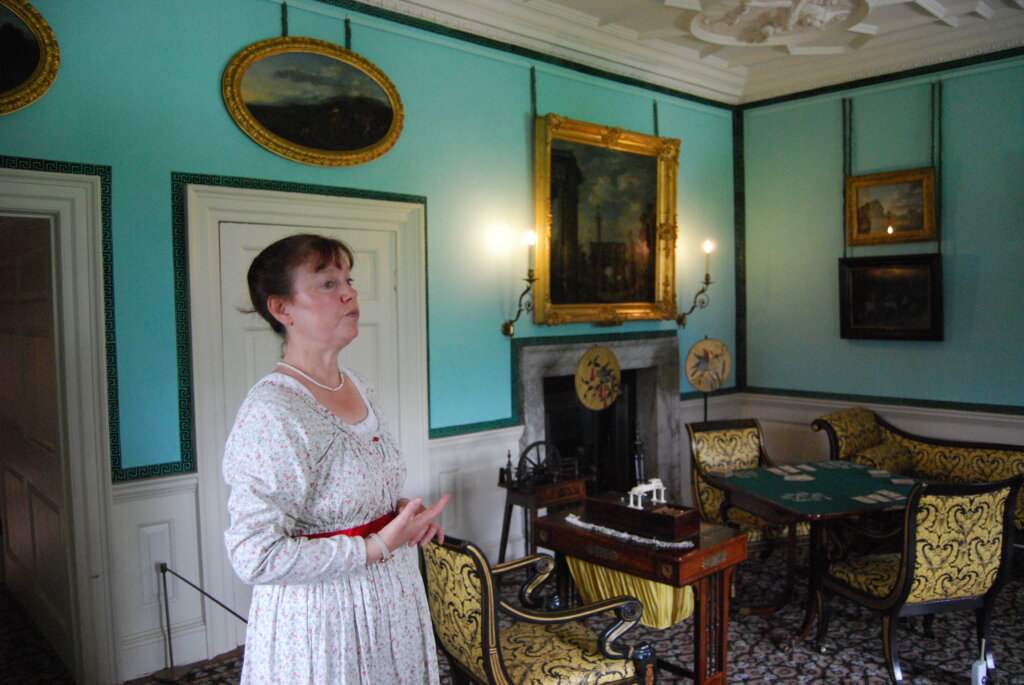
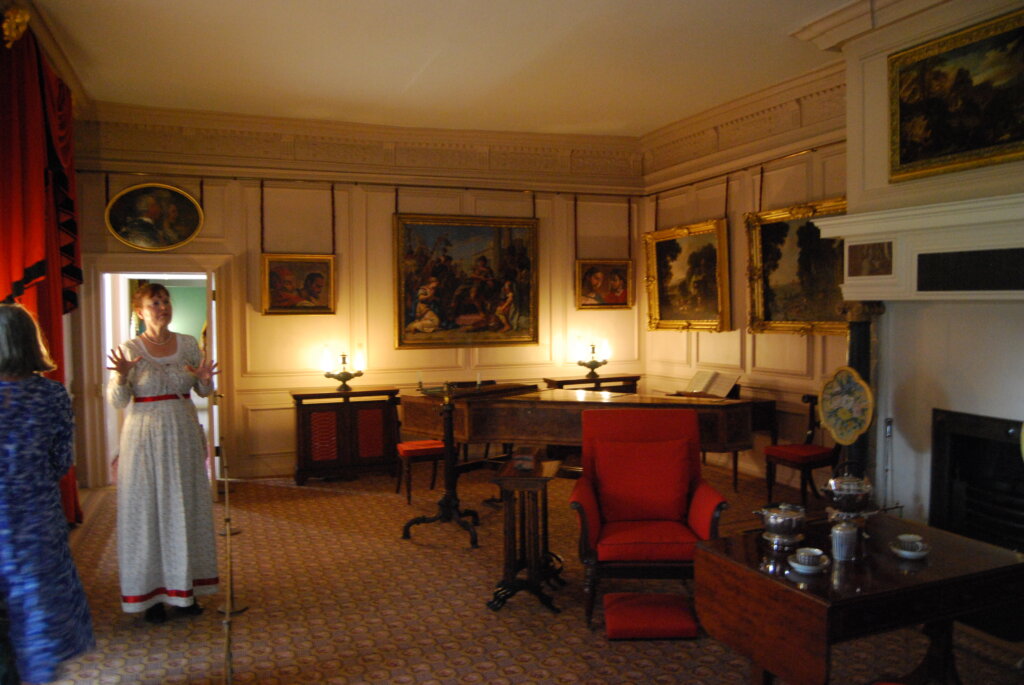
The kitchens of the palace were in a separate block, originally linked to the palace by a covered walkway. Although Kew palace was principally a summer residence, carrying the food from the kitchens to the house must have meant that it arrived quite cool. Georgians were not that concerned about their food being very hot, although food warmers and chafing dishes would have reheated it to some extent.
The kitchens were abandoned for decades but Queen Victoria, visiting the palace, was enthusiastic about the idea of opening them to the public. They now provide I wonderful picture of the kitchens as they were in 1818.
Even in the recent hot weather, the cold room where food was stored remains chilly being a semi basement. Meat would be hung from the hooks in the metal beams.
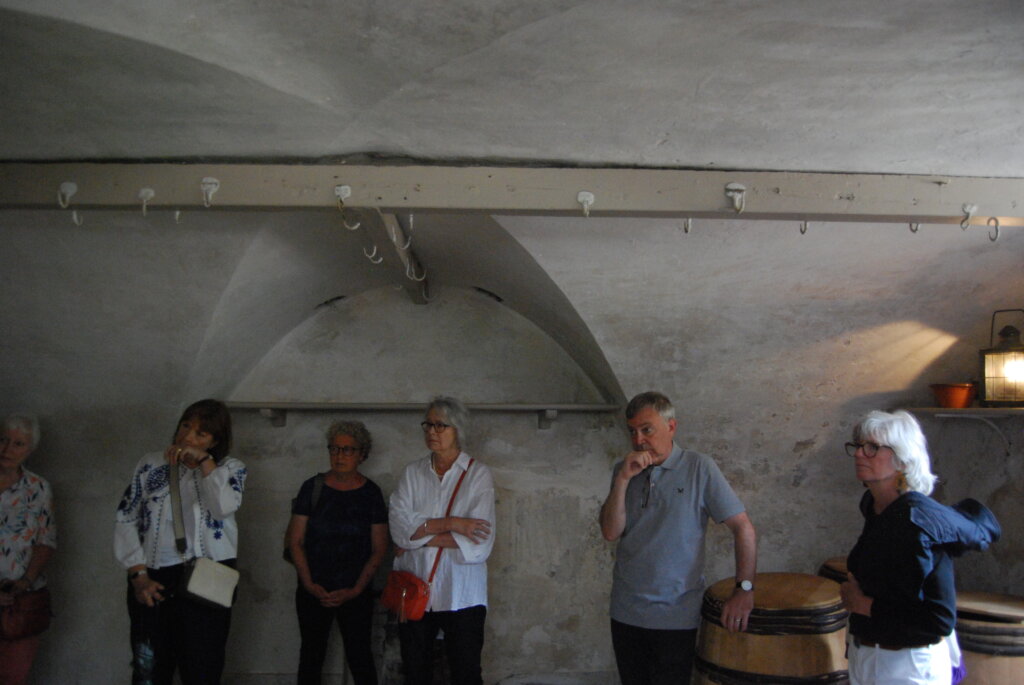
Here’s the bakery. The small oven in the centre of the picture would be heated with wood in the oven. The ash would be cleared out and it would be used to bake bread. As it cooled, pies would be baked in it and, finally, desserts that needed to be cooked at a lower temperature would be put in.
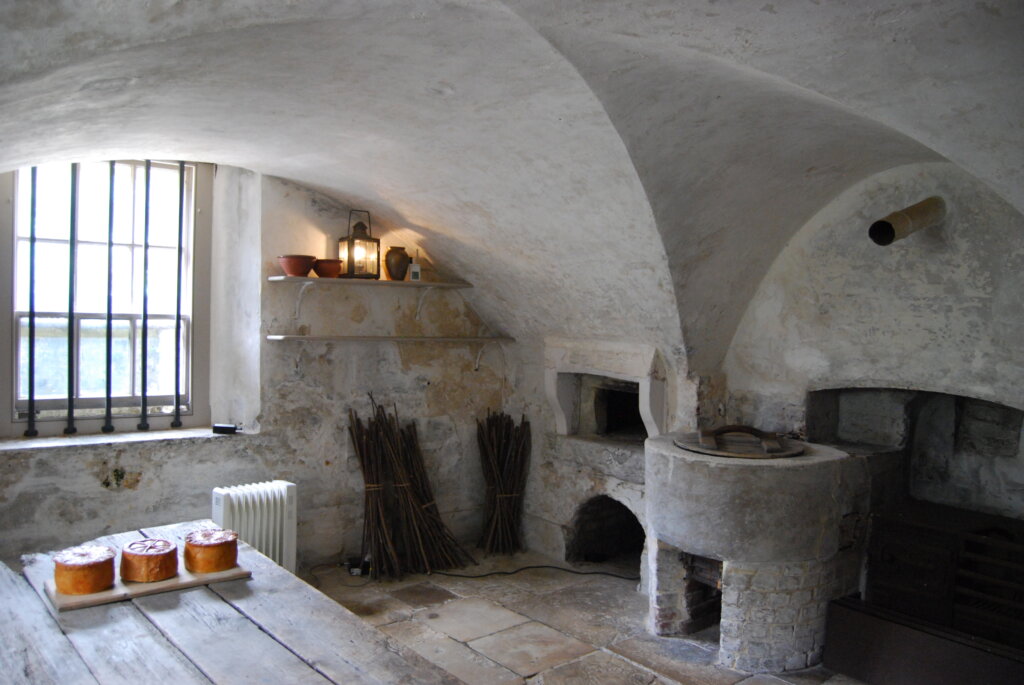
Georgians did like a lot of pies, although the menus (lovingly hand copied from the original records in the nearby National Archive) showed an awful lot of roast meat, particularly mutton. Very different menus were served to the different ranks within the court with the King and Queen’s own menu featuring such delicacies as larks, grouse and crab, as well as venison and partridges.
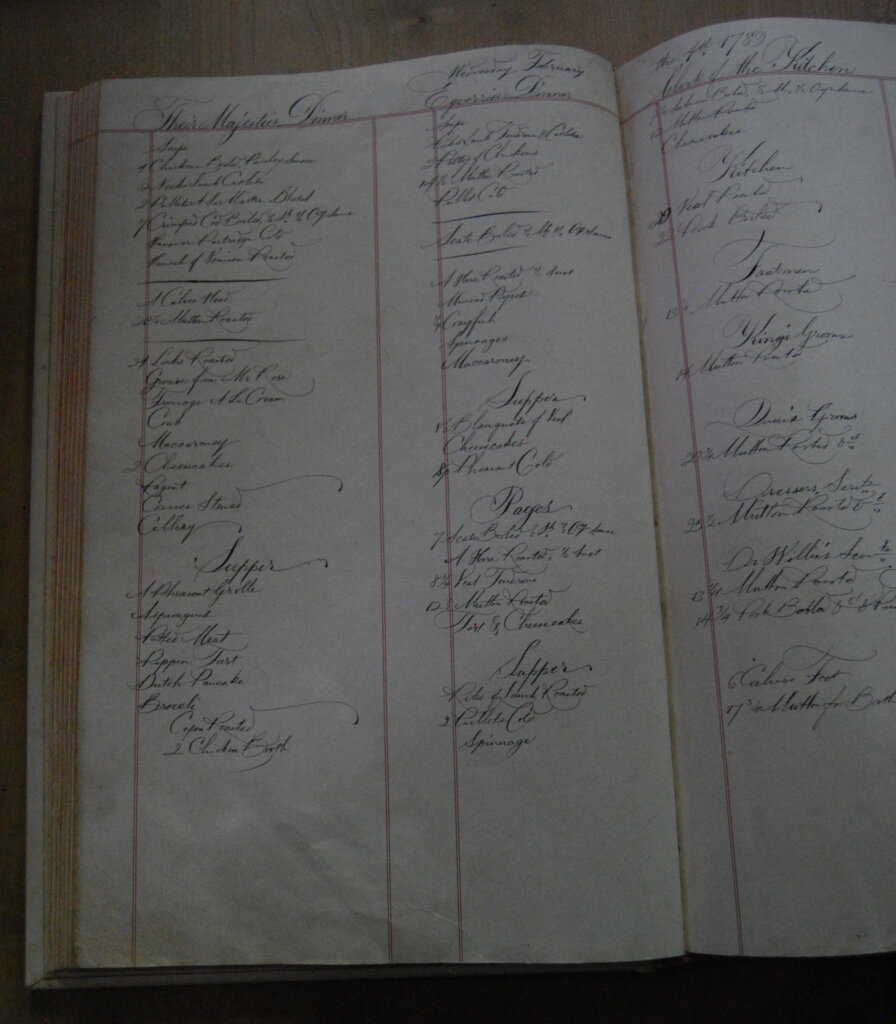
The main kitchen represented the best in the kitchen technology at the time with the spit being turned by the rising draughts from the fire, thus sparing the need to have a small child constantly turning it.
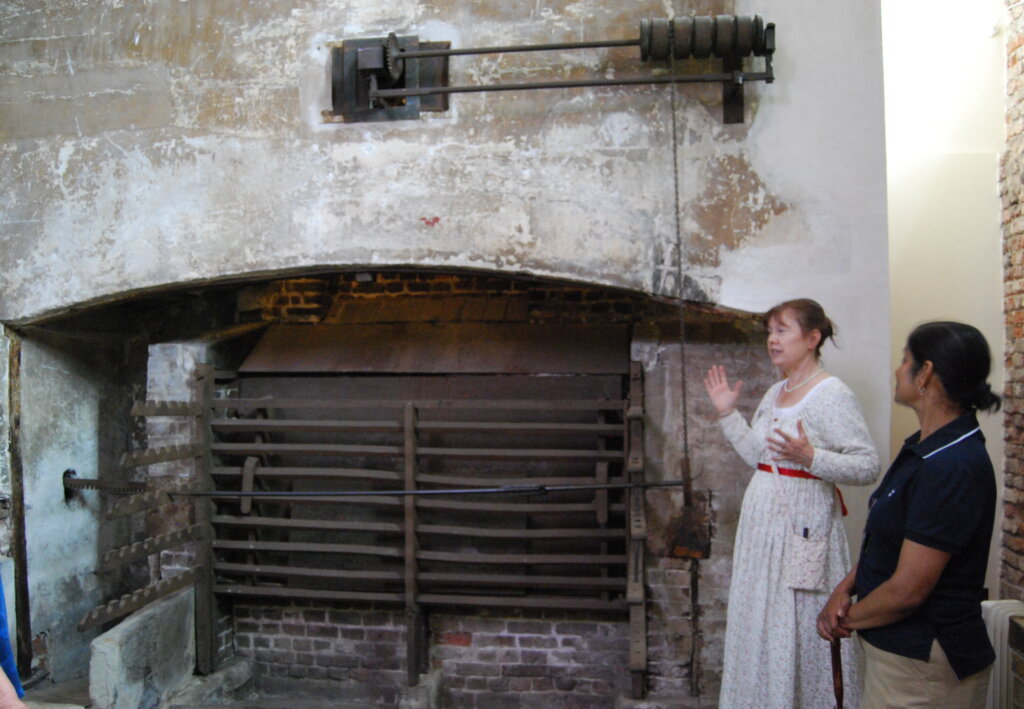
One room in the kitchens is unusual in that it contains a bath. When George III was being treated for his illness at Kew, his doctors said that he should have regular hot baths. With no provision for heating large amounts of hot water in the palace itself, the king had his bathtub installed in the kitchens where hot water was readily available. The bathtub shown in the photograph is supposed to be his actual bathtub, although the wooden cover is now missing. The cover did not only keep in the heat, but meant that George could read and write in his bath.
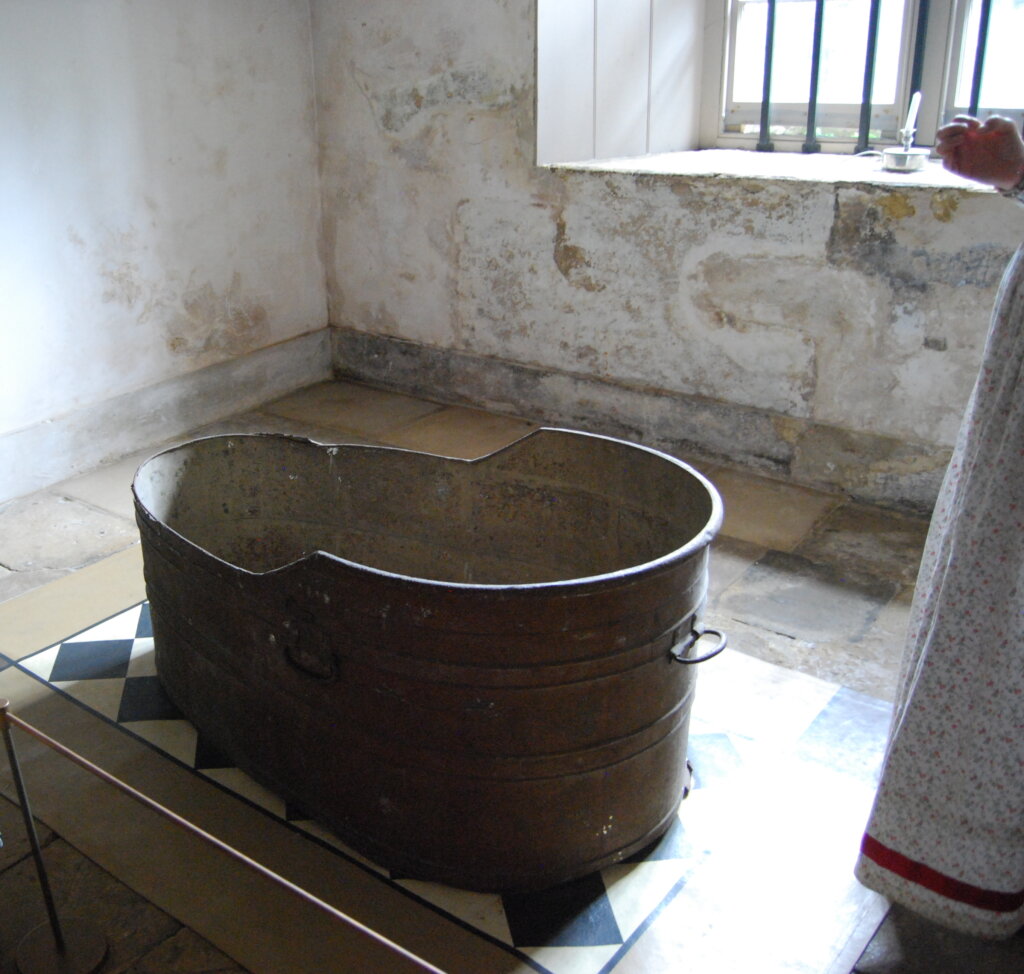
I enjoyed my visit to Kew palace. I hope you can share in my pleasure at seeing Georgian life close to.
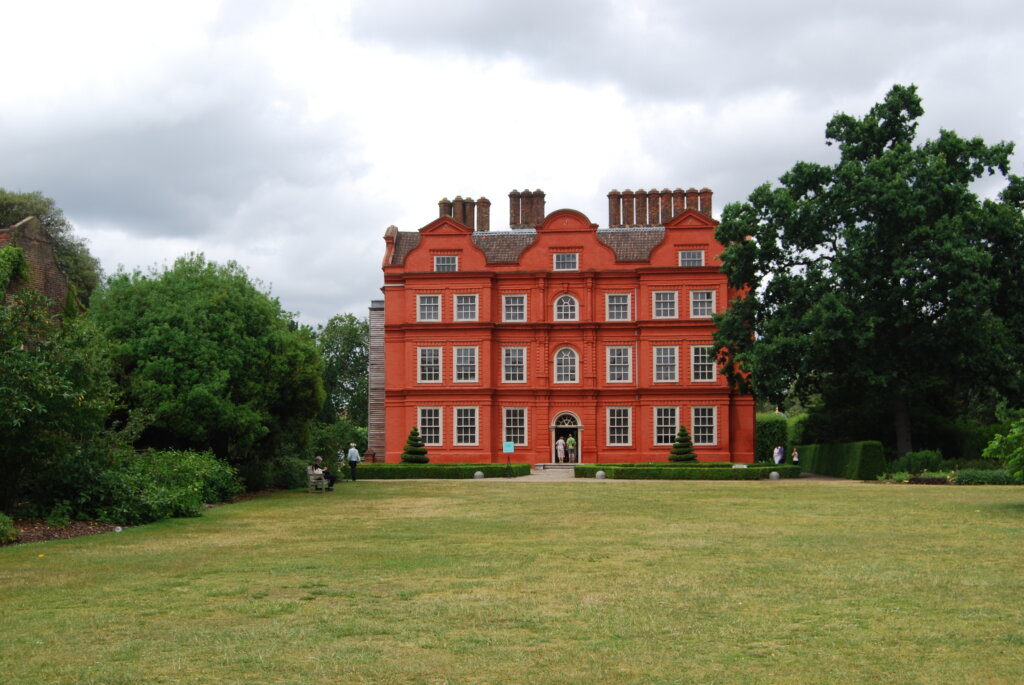
James Burke’s world
Burke never visited Kew Palace, but the real-life Burke, like the Burke of my novels, certainly mixed with some very well-placed men in this period and he would have visited houses like this.
There’s much more to Burke than a soldier-spy. He was a diplomat (see New research on James Burke) and well-connected with figures such as the Duke of York, who lived in Kew Palace as a child.
Learn more about James Burke and his world in my books: all available on Kindle and in paperback. You can read for free if you are subscribed to Kindle Unlimited: My books.

